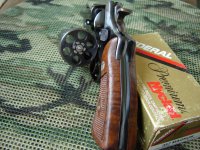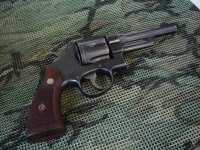Happy new year all.
Something interesting came up during my time off from work for the holidays. Someone asked me if the cylinder for my 38 spl HD is shorter than the regular 357 in a 27 or 28. It turns out the cylinders are all the same between the 27, 28 and HD. I have MR73 in 38 special and it is the same situation. The chamber lengths are the same. In the MR73 case, i can't put the 357 round in the chamber but on the HD however both 357 and 38 spl seat flush.
I think the cylinder dimensions are the same make sense to keep the tooling cost down but what the point then to have a 38spl only version. What significant difference and advantage in a gun that don't have dimensional differences? Love to hear your expert opinions and comments.
Thanks
Something interesting came up during my time off from work for the holidays. Someone asked me if the cylinder for my 38 spl HD is shorter than the regular 357 in a 27 or 28. It turns out the cylinders are all the same between the 27, 28 and HD. I have MR73 in 38 special and it is the same situation. The chamber lengths are the same. In the MR73 case, i can't put the 357 round in the chamber but on the HD however both 357 and 38 spl seat flush.
I think the cylinder dimensions are the same make sense to keep the tooling cost down but what the point then to have a 38spl only version. What significant difference and advantage in a gun that don't have dimensional differences? Love to hear your expert opinions and comments.
Thanks


